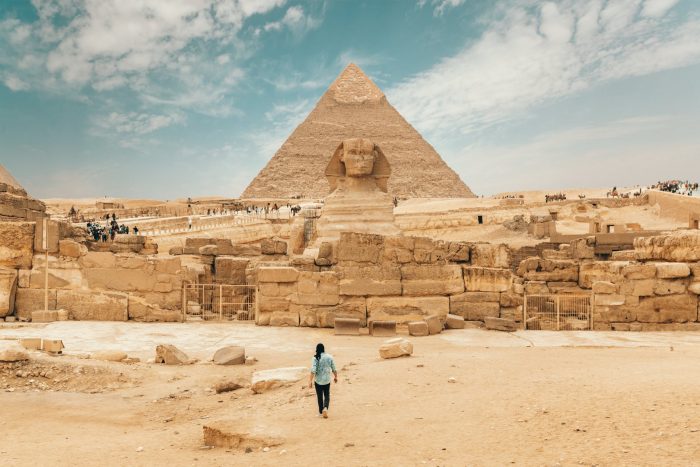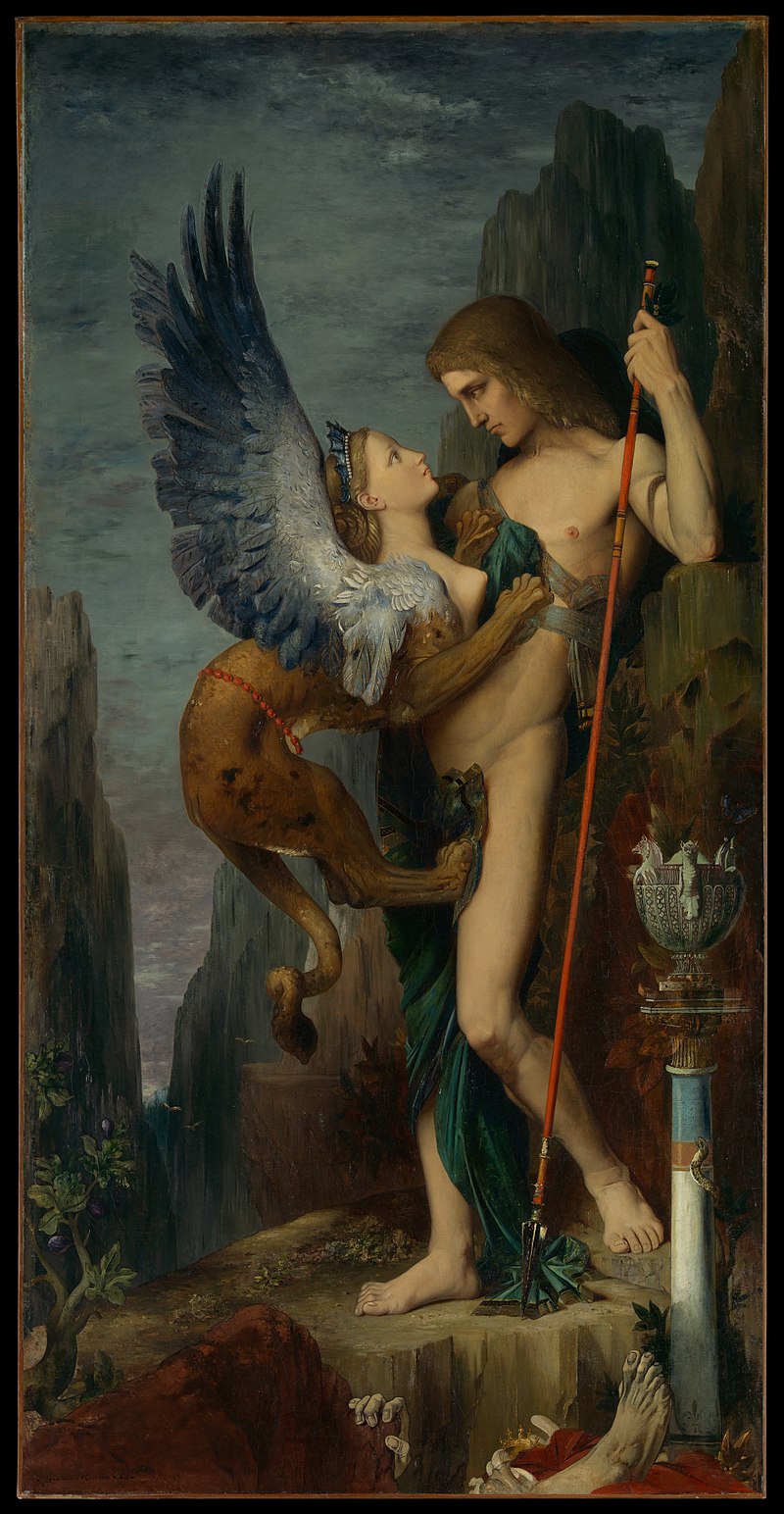“What goes on four feet in the morning, two feet at noon, and three feet in the evening?” The Sphinx asked.
Oedipus answered: “Man: as an infant, he crawls on all fours; as an adult, he walks on two legs and; in old age, he uses a walking stick.” Oedipus was the first to answer the riddle correctly and, having heard Oedipus’ answer, the Sphinx was astounded and inexplicably killed herself. Oedipus went on to succeed in his conquest.
The Riddle of The Sphinx is interesting, and yet there is something left incomplete. The answer to the riddle does not provide the same provoking pondering that so many other riddles provide. It is literally a dead end. The answer feels incomplete. The Riddle of The Sphinx leaves one perplexed rather than ignited by inquisitiveness. It reveals no mystery and yet is among the greatest of mysteries. It provides no paradigm thinking other riddles might provide, however slight the paradigm may be. It is as if The Riddle of The Sphinx hints at another riddle, as if there the answer quietly points to an unsaid follow up riddle and answer behind The Riddle of The Sphinx.
On critical examination the overall implication of The Riddle of The Sphinx is to define and measure the materialistic lifetime of man. The answer leaves one wanting, perhaps in awe, but wanting nonetheless. It is not an inspiring answer to present mortal fate and is out of tune with the rest of Egyptian pursuits toward immortality. The answer does not resemble the inspired and occulted pursuits pertaining to spirituality and immortality the people of Ancient Egypt/Kemet endeavored.
“There are three, but where is the fourth?” ~Carl Jung
The answer is basic and suggests the unsaid, the esoteric. There are innumerable subjects and systems which contain an overt set of three and a covert fourth aspect. There are so many such sets in fact that nearly every set of three hints at the unsaid, silent, fourth aspect. Perhaps the most significant worldly symbol relating a set of four that illustrates the idea possibly insinuated in The Riddle of The Sphinx is the ancient Aum symbol.
Perhaps the most coveted Egyptian symbol that pertains to the unsaid and distinct fourth aspect is The Ankh. Variations of the cross symbol are revered the world over. Two lines intersecting form four corners or parts and in the case of The Egyptian Ankh one aspect is distinct. The top aspect of The Ankh is oval, relating feminine or Yin energy, corresponding to the ultimate Yin, the mystery, the unsaid, the beyond, the highest state of consciousness. The Ankh is symbolic for eternal life and the consciousness of life in four parts, just like Aum.
The Egyptian Djed Symbol, like the Ankh, is symbolic of the archetypal four aspects and underlines the idea of the completeness of four in Egyptian symbology. The Ankh is symbolic for the spiritual world of eternity and The Djed is symbolic of the physical world. The Djed pillar is symbolic of the spine of Osiris, a sacred tree, the four directions of Earth and the four sons of Horus.
Four, as well as The Djed itself, are symbolic for completeness and stability. The Ankh and The Djed are often pictured together and sometimes fused together with The Was sceptre, a staff symbolizing dominion and sovereignty of the mastery.
The simple answer is to The Riddle of The Sphinx is ‘man.’ Yet the answer is perhaps misleading and is certainly basic and inspires little. The hidden unsaid riddle is, ‘what is beyond the walking on three symbology?’ And what is the unsaid esoteric and inspiring answer? The unsaid answer is not the aged man who needs the assistance of walking stick. The contrasting answer revealing potentiation and inspiration rather than degeneration is the master.
The true inspiring answer is the human who has reached mastery standing with a scepter, a staff, a measuring stick, a planting stick, a pole. The unsaid answer is man as a sacred geometer, as spiritual master, akin to Thoth who grasps his measuring stick, symbolizing mastery of the world for the pole symbolizes the world itself, generation and creation, and the measuring/comprehension thereof.
Thoth, and many other Egyptian Gods, hold the measuring staff symbolizing mastery of the world, sometimes they hold more than one staff symbolizing mastery of worlds. Many other allegorical spiritual masters and gods the world over all also hold the staff or pole, symbolizing mastery of the polarity of creation, mastery of life, not feeble walking.
What is commonly known as The Pyramid Text, and The Egyptian Book of The Dead reveals a similar strain of the great riddle facing all of us, the riddle of life and death. The Egyptian Book of The Dead is actually a misnomer of a name and, like the typical supposed answer to The Riddle of The Sphinx, leads one to an uninspiring misnomer, a dead end. The Egyptian Book of The Dead is actually more accurately titled The Book of Coming Forth by Day.
The idea behind coming forth by day as opposed to coming forth by night further reveals the intended subtle lesson of The Riddle of The Sphinx. The opposite of coming forth by day is coming forth by night. Those with deadened and dull awareness come forth by night, those who have pursued mastery come forth by day. The man comes forth by night, the master comes forth by day.
The master. The result of the pursuit of becoming masterful, as Thoth, and as the many other adepts who held the staff symbolically is the unsaid esoteric answer to The Riddle of The Sphinx. In the past many adepts who gained insight and mastery may have been given the title of Hermes Trismegistus, just as the Greek counterpart of Thoth. The master becoming timeless and immeasurable rather than man becoming aged and confined is the unsaid esoteric answer.
Man becoming the sacred geometer to master measure rather than man denigrating to be measured is the answer. The warning that death is coming is not the only inference, the pursuit of mastery beyond original potential is the refined answer, the unsaid fourth aspect.

 Share on bsky
Share on bsky
















Read 0 comments and reply